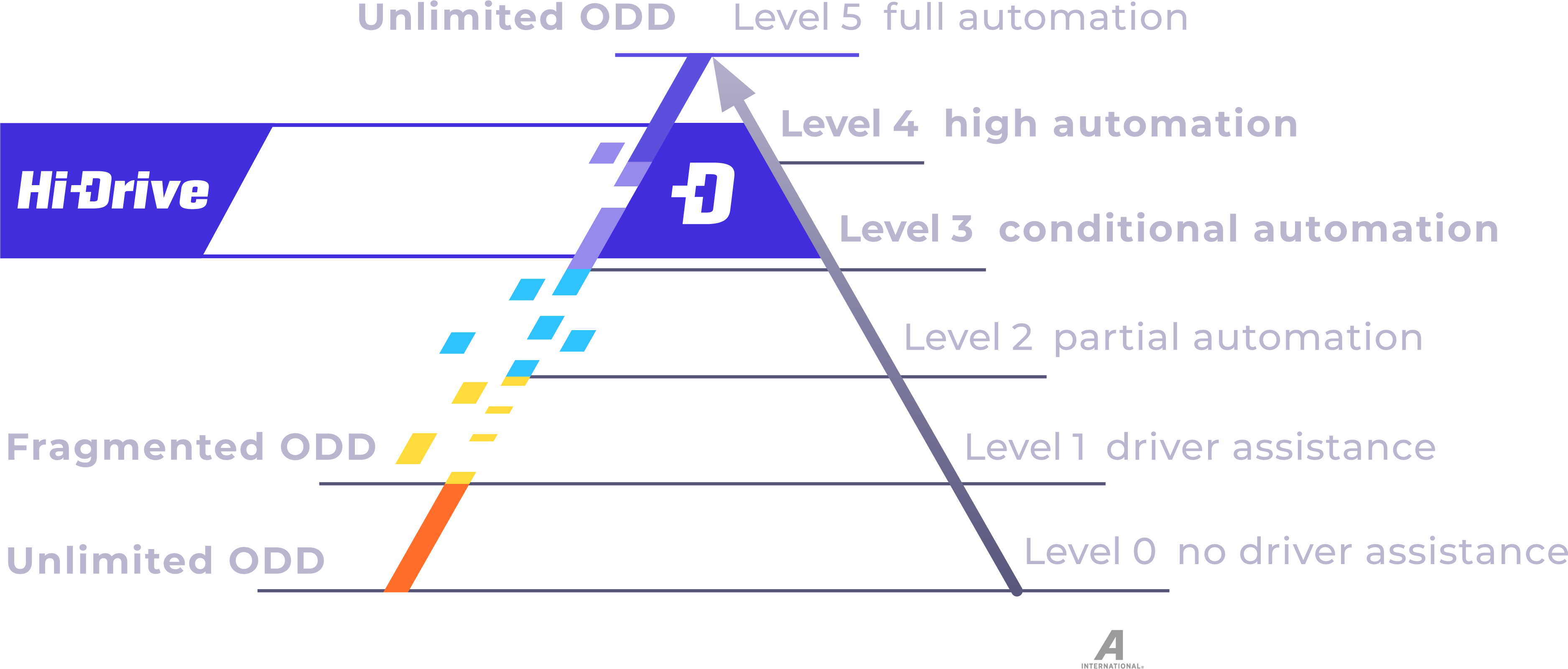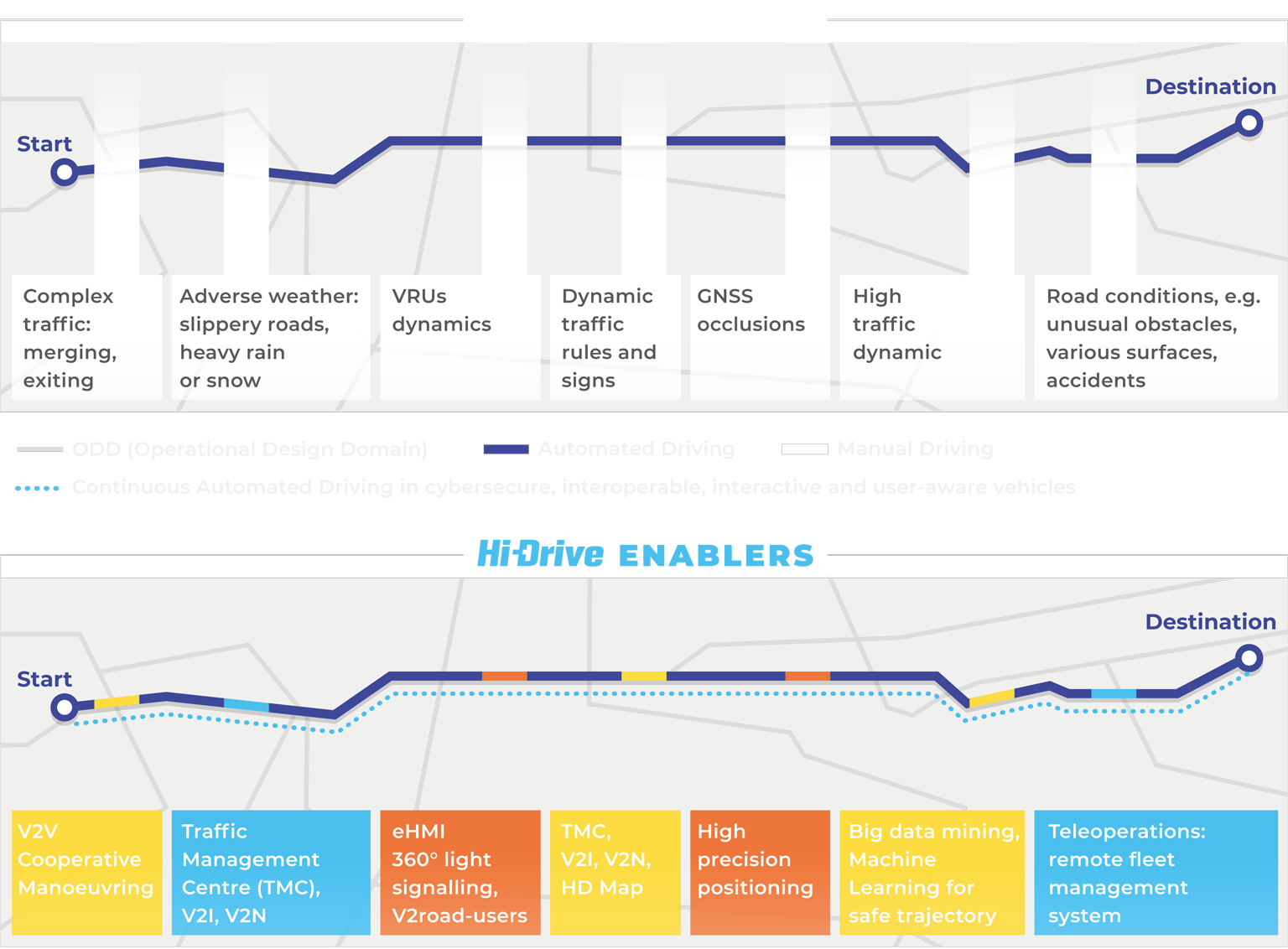Exploring Operational Design Domains (ODDs) and the challenges within the different levels of Driving Automation as classified by SAE standards
Hi-Drive advances the European state-of-the-art of automated driving from SAE L3 ‘Conditional Automation’ further up towards ‘High Automation’ by demonstrating in large-scale trials the robustness and reliability of CAD functions. We focus on testing and evaluating variety of functionalities, from motorway chauffeur to urban chauffeur, explored in diverse scenarios with heterogeneous driving cultures across Europe.

Hi-Drive will push automated driving further towards High Automation. Hi-Drive addresses a number of key challenges which are currently hindering the progress of developments in vehicle automation. Our ambition is to considerably extend the operational design domain (ODD) from the present situation, which frequently demands interventions from the human driver. The removal of fragmentation in the ODD is expected to give rise to a gradual transition from a conditional operation towards higher levels of automated driving.
We focus on testing, demonstrating and evaluating robust high automation functions in large set of traffic environments on motorways, in cities and cross-border scenarios, with a specific attention to demanding, error-prone, condition
Today, L2-L3 Automated Driving Functions (ADFs) rely solely on the vehicles’ own perception system, and are therefore designed to function in a specific ODD limited by geography, visibility, traffic events, speed and roadways. However, even within these narrow ODDs, frequent takeover requests by human drivers occur due to sudden and unpredictable traffic events. By identifying the right technology enablers for specific corner cases and challenges, Hi-Drive makes it possible to close the gaps and minimize the degree of ODD fragmentation. Hi-Drive’s Automated Vehicles (AVs) operate in variable traffic conditions, communicate in an automation mode with the external world and anticipate traffic conditions beyond the line of sight.


Privacy policy
This website uses Matomo to analyze traffic and stores a cookie that helps us improve your user experience. The cookie is stored in your browser for 30 days. This data is processed only by us and is not shared with third parties. Please read our privacy policy for more information.